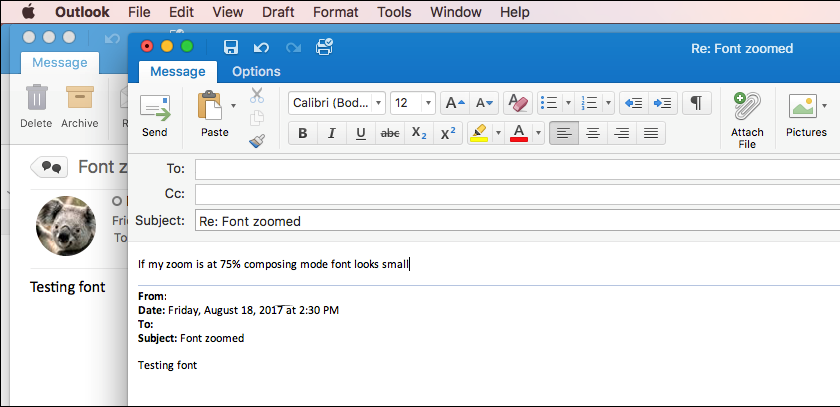- The Mac Outlook backup file (.OLM) carries all the mail items and can be used in case the entire Outlook for Mac 2016 or 2011 gets damaged or corrupt. However, if the *.olm file itself is damaged, one can repair it with RecoveryTools OLM Repair Software.
- The Calendar Checking Tool for Outlook is a command-line program that checks Outlook Calendars for problems. To use this tool, the Outlook calendar must reside on a Microsoft Exchange Server. The tool does not work with IMAP, with POP3, or with other non-Exchange mail servers.
- The Outlook Search Repair Utility will show “Reindexing, please wait” while it works. This process can take up to an hour or longer depending on the size of your Outlook profile. Please allow this utility to complete.
- The Calendar Checking Tool for Outlook (CalCheck) is a command-line program that checks the Microsoft Outlook calendar for problems. The tool opens an Outlook messaging profile to access the Outlook calendar.
- Unmistakably Office, designed for Mac. Get started quickly with new, modern versions of Word, Excel, PowerPoint, Outlook and OneNote—combining the familiarity of Office and the unique Mac features you love.
Outlook For Mac Repair
You can rebuild the Office database by using the Microsoft Database Utility. If Office detects a problem with the database, it automatically runs the Database Utility. For a list of problems that may indicate your database is damaged, see About the Office database.

Outlook For Mac Repair Tool

The Outlook Mac recovery tool can be used to repair OLM file that is in a corrupt state. Once repaired, the recovered data items are saved in RGE format by the name - 'Main Identity.rge'. The resultant RGE file can then be imported in the Outlook Mac desktop email client to access all the mailbox items. Repair a Profile in Outlook 2007, 2010, 2013 and 2016 Eric Simson Updated on September 27, 2018 Outlook PST File 26 Comments The tutorial explains the process to repair the Outlook profile in Outlook 2016, 2013, 2010, and 2007 and describes some common errors associated with Outlook profiles.
Note: The ability to manually repair or rebuild a database is not available in Outlook 2016 for Mac. If a problem such as Outlook data corruption occurs, Office 2016 for Mac automatically repairs and rebuilds the Office database for you. For more information, see About the Office 2016 for Mac database.
Before you rebuild the Office database, make sure the problem isn't the result of a damaged or fragmented hard disk. To do so, run a disk diagnostics and repair application, such as Apple Disk Utility. For more information about how to identify and repair hard disk problems, see the documentation for your disk utility application.
Caution: If you have a Microsoft Exchange account, rebuilding the database deletes any information not synchronized with the Exchange Server, including your contacts' certificates. Before you rebuild the database, you might want to back up Outlook data stored only on your local computer. For more information, see Export or manually archive Outlook items.

On the Outlook menu, click Turn Off Office Reminders.
Quit Messenger for Mac and all Microsoft Office applications, including Outlook.
Open the Microsoft Database Utility.
The default location is in /Applications/Microsoft Office 2011/Office/.
Tip: You can also open the Database Utility if you close Outlook, hold down the 'Option' key, and then click the Outlook icon in the Dock.
Click the identity of the database you want to rebuild, and then click Rebuild.
Notes:
You must have read and write permissions for the identity folder to rebuild your database. To check for permissions, select the identity in the /Users/ username/Documents/Microsoft User Data/Office 2011 Identities/ folder and then in the File menu, click Get Info. Check the permissions under Sharing and Permissions.
Before the Database Utility rebuilds a database, it creates a backup copy of your database and moves it into a folder in the /Users/ username/Documents/Microsoft User Data/Office 2011 Identities/ folder. The backup copy displays the date and time the backup was created.
If your computer has insufficient free disk space to store both your current database and its copy, an out-of-memory error occurs. For example, if the current size of the database is 10 megabytes (MB), you will need at least 20 MB of free disk space to rebuild or compact the database.